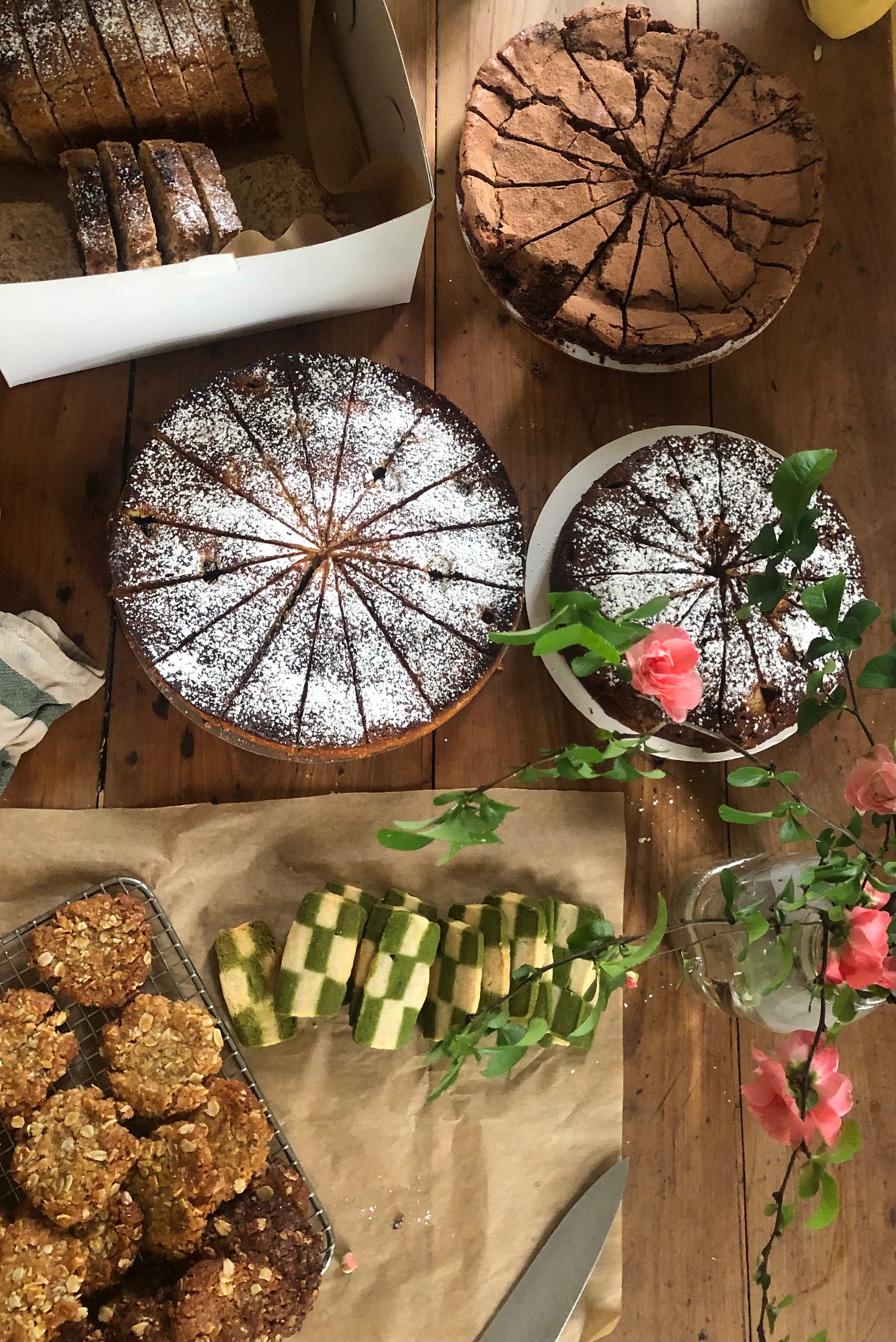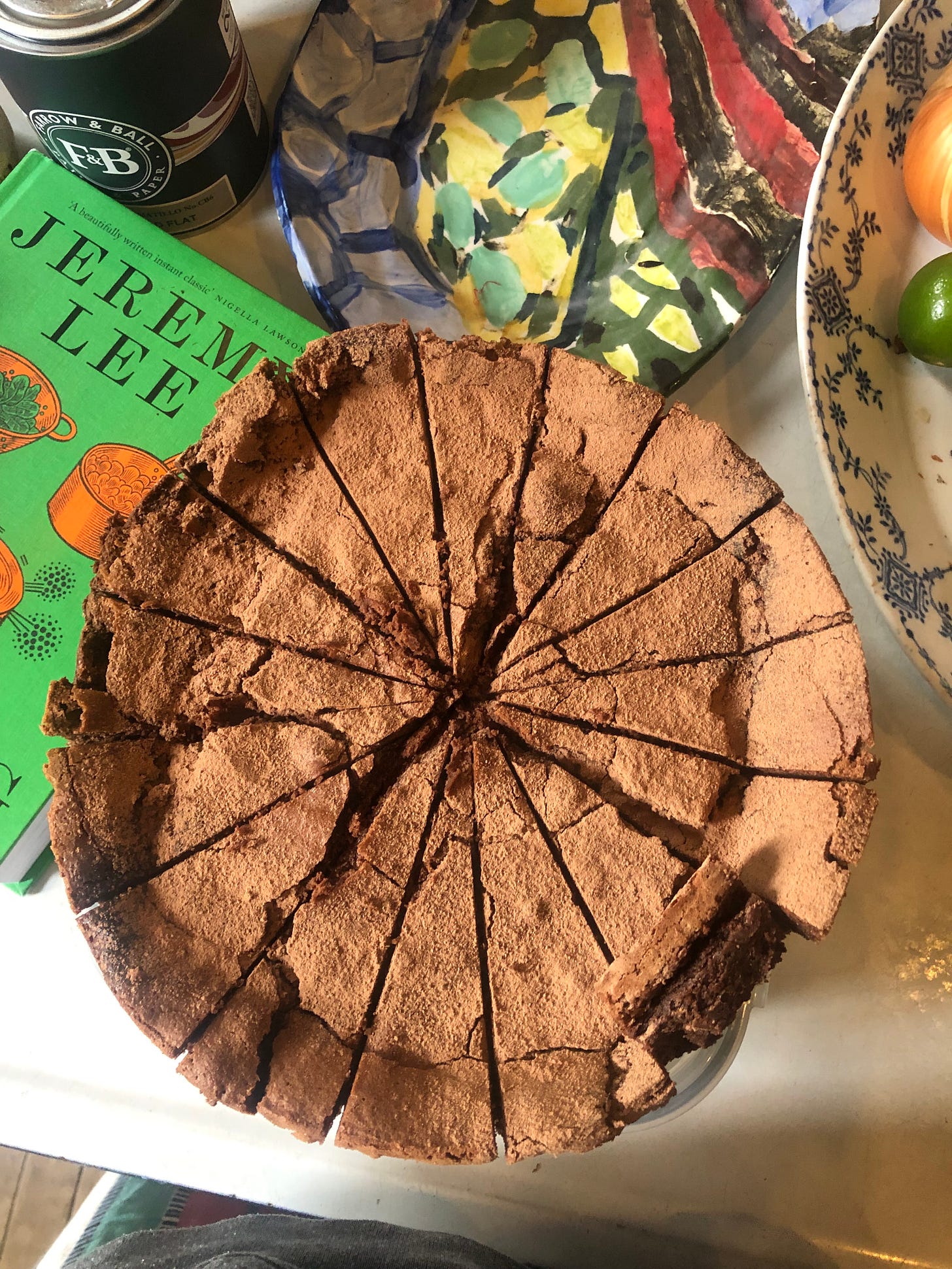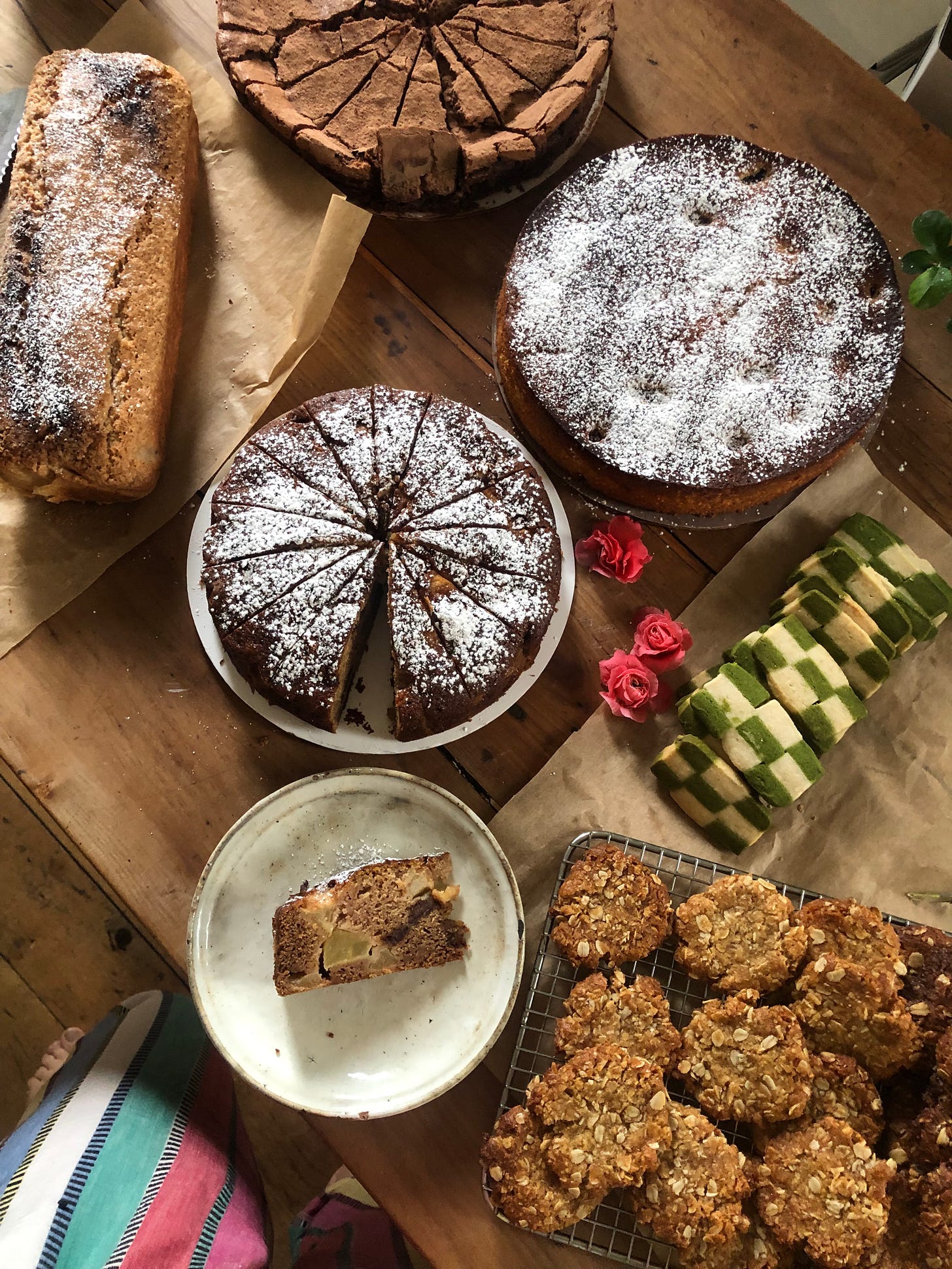It’s been a week of considering the balance between perfect and good-enough and knowing how to make the most of things when they don’t quite work out how you planned. I think they call it grace, a good thing to practice in the kitchen as well as in life in general.
It started with a photo of a cake that was broken, but clearly otherwise very good, in which the baker proclaimed their cake a failure. “Nothing a little whipped cream won’t fix” I replied, to which they implied that it was beyond a little whipped cream to help it. Later that day a second photo of a trifle appeared, the same cake looking perfectly at home nestled between layers of thick cream and berries.
This weekend I baked several cakes for a school event, all in my toaster oven. The results were mostly good (to be honest I have been baking in my toaster oven exclusively for 4 years but rarely pull a marathon bake-off like yesterday’s) but there were the inevitable scorch marks that scar a cake that rises too close to the elements as they bake, and the sides broke off my flourless chocolate cake after I put it into the oven, having removed it once to cut off the burns. Even for a seasoned baker as myself, with more failures than I could even try to remember, it’s disheartening to lose a cake, or at least that ‘perfect’ finish that baking can promise. Many people are attracted to baking because of its predictability. If you measure everything perfectly, mix it the exact same way, bake it for the exact number of minutes the result can be the same every time. There is something very re-assuring about it.
Of course the down side to that is that when things go wrong, it can be incredibly frustrating. I, for the most part, have always been a bit of a rouge baker- I’m not good at measuring properly and at home- I’ll make things differently every time I do it because I can’t be bothered measuring/ going to the shop to get something etc. This is the reason I have had so many baking failures, but is also how I learned to troubleshoot recipes and make the most most of my sometimes less-than-perfect results. If we learn from our mistakes, then I have had a LOT of opportunities to learn!
These are my top tips for ‘fixing’ less-than-perfect baked goods. I will preface this by saying that some cakes are just beyond help. If you put too much baking soda in a cake and you can taste it (done this more than once), chuck it. If you added your butter when it was too hot and now you have a dense, greasy brick instead of a cake, it’s over. If you accidentally cremate your cake, it’s not coming back. These tips are for the “it broke coming out of the pan” or “it’s a bit underdone in the middle but otherwise ok” or “I cooked it in the toaster oven and now it has burn marks on top” type imperfect baking. And no, there’s nothing profound here, but sometimes it just helps to hear it from someone else.
Trim and Cover- If your cake is almost ok, but has some overcooked spots on top, trim them off and cover it up! Powdered sugar (or cocoa powder is nice for chocolate things), whipped cream or icing. More often that not I sprinkle icing sugar on my cakes anyway and a hefty sprinkle will hide a multitude of surface imperfections. Whipped cream (ricotta whip is especially good because it holds well) or thick icing such as cream cheese icing are also good, especially if the cake looks like it has a bunch of potholes. Cutting off the domed top and flipping the cake upside down is also a good way to deal with this.
You can also just cover with a big confident dollop of cream as you serve it, no fuss required. Add some berries or if it is a good chocolate cake, a sprinkle of fresh, very finely ground coffee over the cream.
Chop and Re-Assemble. If your cake is not in good enough shape to stay in it’s cakey shape, simply cut it up and reassemble as a new dessert altogether. I call any dessert like this ‘trifle’, though I guess technically it’s not a trifle without jelly. The best ‘trifles’ have some kind of light liquid (a light fruit syrup or compote or coffee, or just straight booze if you are game- fortified or dessert wine would be good- grappa, marsala, sherry…) this is just to moisten the cake layers a little to help the cake and cream relax into each other. Plain old whipped cream is fine here, but I think ricotta whipped cream is even better, or some cream whipped with a little mascarpone, vanilla and a spoonful of powdered sugar to taste. The ricotta or mascarpone help to stabilize and give substance to the cream. You could layer in fresh berries or poached fruit such as pears or rhubarb if your cake was a relatively plain one, or a little homemade jam.
This method is great if your cake is falling apart or was slightly underdone in the center or a little too overdone on the sides to look good. Or if it was a bit tough or dry or has been sitting for a few days and lost it’s initial fresh-cake charm. Trim away the bad parts, cut the cake into similar sized pieces and layer into a bowl or dish with the cream, and fruit, drizzling or brushing a little of your chosen liquid over the cake as you layer. If you can, leave for a few hours to allow the textures and flavors to mingle.
Most Importantly, be confident, and fix it with style! Accept that the life path of you cake has changed, it is no longer the cake you had planned but something new and equally delicious. Be bold in your icing sugar sprinkle! Pile on the cream high! Be extra with those berries! Put it on a great plate and COVER IT IN FLOWERS! If a side falls
off your flourless chocolate cake, smile and add some more cocoa powder! And don’t tell anyone is wasn’t meant to be like that!
Date and Apple Cake
Keep reading with a 7-day free trial
Subscribe to Still Life With Lemon to keep reading this post and get 7 days of free access to the full post archives.






